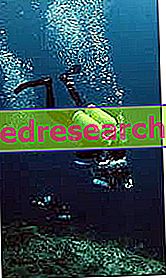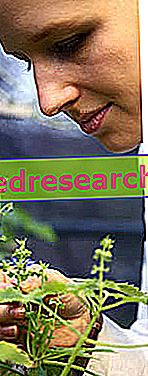
What is Daronrix?
Daronrix is a vaccine. Daronrix is a suspension for injection containing inactivated (killed) influenza viruses. The vaccine contains a strain of the influenza virus named A / Viet Nam / 1194/2004 (H5N1).
What is Daronrix used for?
Daronrix is a vaccine that can be used for the prophylaxis of influenza only in a situation officially declared as "pandemic" by the World Health Organization (WHO) or by the European Union (EU). An influenza pandemic occurs when a new type (strain) of influenza virus is detected that is easily transmitted from person to person due to the absence of immunity (protection) among the population. A pandemic can affect most countries and regions of the world. Daronrix would be given according to official recommendations.
The vaccine can only be obtained with a prescription.
How is Daronrix used?
Daronrix is used in two doses, at least three weeks apart. The vaccine is administered by intramuscular injection in the upper part of the arm.
How does Daronrix work?
Daronrix is a so-called "prototype" vaccine, which is a special type of vaccine that can be produced to fight a pandemic. Before a pandemic occurs, no one knows what the flu strain will be, so the manufacturers are not able to prepare an adequate vaccine in advance. For this reason, a vaccine is produced that contains a specially selected strain of influenza virus because no one has been exposed to it and to whom, therefore, no one is immune. This vaccine can be tested to observe reactions in humans and to be able to predict how people will react if the influenza strain responsible for the pandemic is included in the vaccine.
Vaccines act by "teaching" the immune system (the body's natural defense system) to defend itself against a disease. Daronrix contains small amounts of a virus called H5N1. The virus is intact, but has been inactivated (killed) so as not to cause the disease. In the event of a pandemic, the viral strain present in Daronrix will be replaced by the strain responsible for the pandemic before the vaccine is used.
When a person is vaccinated, the immune system recognizes the inactivated virus as "foreign" and produces antibodies against that virus. In case of exposure to the virus after vaccination, the immune system will be able to produce antibodies more quickly.
The body can therefore protect itself from diseases caused by these viruses. The vaccine also contains an "adjuvant" (a compound containing aluminum) to stimulate a better response.
How has Daronrix been studied?
The effects of Daronrix were first tested in experimental models before being studied in humans. The main study of Daronrix was conducted on 387 healthy adults; the study compared the ability of different doses of Daronrix, with or without adjuvant, to stimulate the production of antibodies (immunogenicity). Participants were given two injections of Daronrix, containing one of four different doses of emagglutinin (a protein found in influenza viruses), with or without the adjuvant, after 21 days. The main measure of effectiveness was the levels of antibodies against the influenza virus detected in the patients' blood before vaccination, on the day of the second injection (day 21) and at 21 days (day 42).
What benefit has Daronrix shown during the studies?
Based on the criteria defined by the Committee for Medicinal Products for Human Use (CHMP), a prototype vaccine must induce protective antibody levels in at least 70% of vaccinated people to be considered adequate.
The study showed that Daronrix containing 15 micrograms of hemagglutinin and the adjuvant produced an antibody response that reflected these criteria. At 21 days after the second injection, 70.8% of the vaccinated people were found to have antibody levels capable of guaranteeing protection from H5N1.
What is the risk associated with Daronrix?
The most common side effects with Daronrix (seen in more than 1 patient in 10) are headache, pain and redness at the injection site, and fatigue. These reactions normally disappear within 1-2 days without treatment. For the full list of all side effects reported with Daronrix, see the Package Leaflet.
Daronrix should not be given to patients who have had an anaphylactic reaction (a serious allergic reaction) to any of the constituents of the vaccine or to any substance found in trace amounts in the vaccine, such as eggs, chicken proteins, gentamicin sulfate (an antibiotic). However, in a pandemic situation, it may be appropriate to administer the vaccine to these patients, provided that resuscitation equipment is immediately available.
Why has Daronrix been approved?
The CHMP (Committee for Medicinal Products for Human Use) concluded that the benefits of Daronrix outweigh its risks and that its adequacy as a prototype vaccine in anticipation of an influenza pandemic has been demonstrated. The Committee therefore recommended that Daronrix be given marketing authorization. Daronrix has been authorized in "exceptional circumstances". This means that since the strain of influenza virus that could cause a pandemic is not known, it has not been possible to obtain complete information on the future pandemic vaccine. The European Medicines Agency (EMEA) reviews the new information available every year and, if necessary, updates this summary.
What information is still awaited for Daronrix?
If the pandemic is officially declared, and if the company producing Daronrix decides to market the vaccine, the company will introduce the strain responsible for the flu into the vaccine. The company will collect information on the safety and efficacy of the pandemic vaccine and present this data to the CHMP for evaluation.
What measures are being taken to ensure the safe use of Daronrix?
If Daronrix will be used during a pandemic, the manufacturing company will collect information on the safety of the vaccine during its use, including information on side effects and its safety in children, pregnant women, patients in serious conditions and people with problems. to the immune system.
More information on Daronrix:
On March 21, 2007, the European Commission granted GlaxoSmithKline Biologicals sa a marketing authorization valid for Daronrix throughout the European Union. The full EPAR for Daronrix can be found here.
Last update of this summary: 03-2007.



